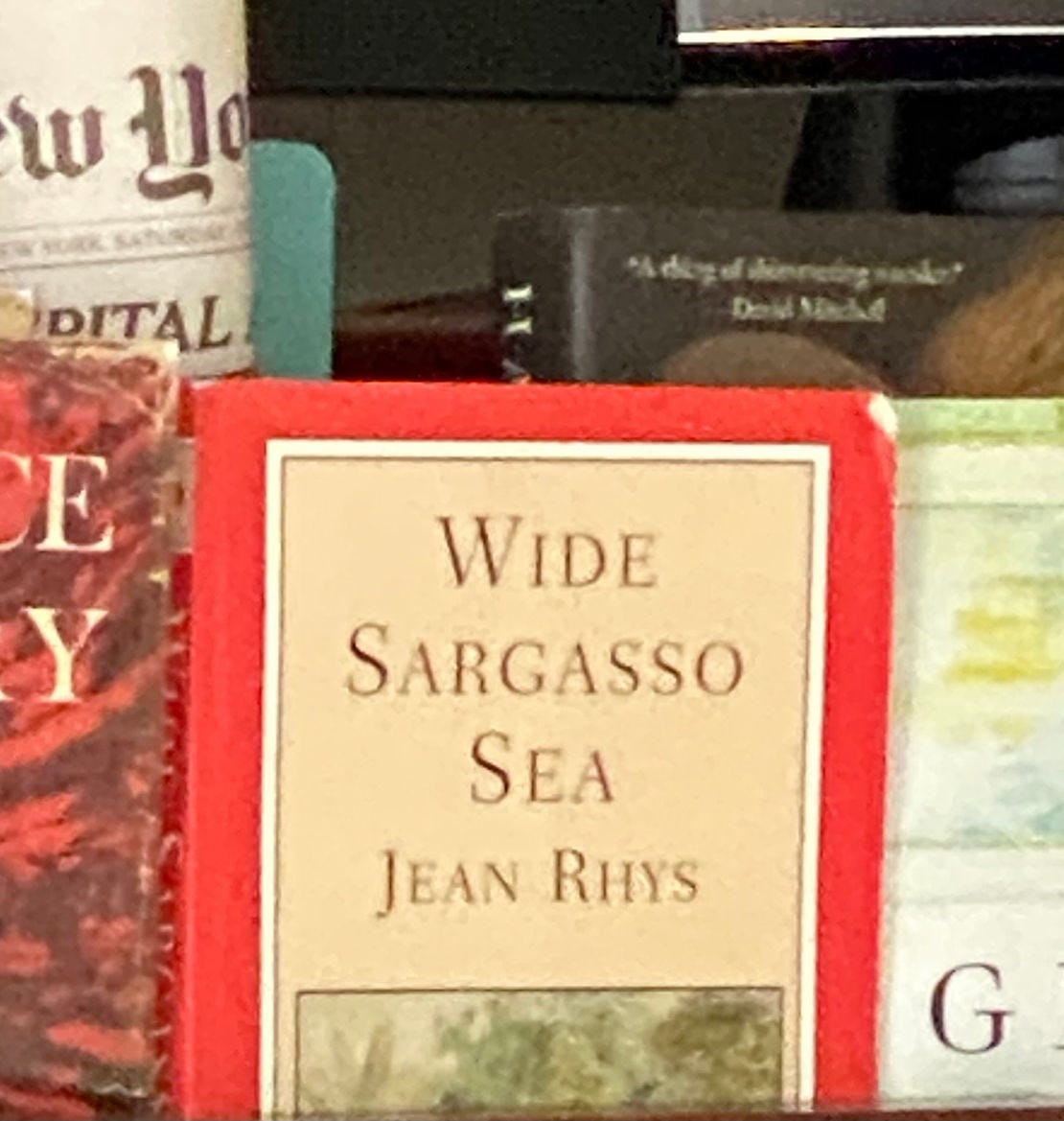Why Read: WIDE SARGASSO SEA ... better late than never
This novel was written 54 years ago (1966). It took those 54 years for me to not only read it but to able to take it in. I suspect I opened this book at least half a dozen times over those years. I know it was part of the canon almost the day it was published. It took Jean Rhys much of her life to write it and it took much of my life to read it.
This is a very difficult book with a lot to say. I read the Norton edition with extensive footnotes on every page. Without the footnotes, I would have not only gotten lost but would have missed much of what Rhys was trying to accomplish. It is often unclear who is talking. The scenes shift locations and one is often uncertain where they are on the island or even if you are still on the same island. A family tree map might have helped. In the end, you realize that all of this confusion is intentional. It is a product of the confusion wrought by colonialism, misogyny and violent racism. It is what happens if you try to unravel the Gordian knot of a Caribbean history rooted in slavery, violence, money and rape. It is, famously, Rhys feminist backstory to Charlotte Bronte’s comparatively safe and sanitized Jane Eyre. It is a shockingly dense and brilliantly realized novella. Even its length is a riposte of sorts to the wordiness of the Victorian novel – a wordiness that hides as much as it reveals.
The Norton edition is packed with interpretive essays that go a lot farther unpacking this book than anything I could write. My most relevant comment has more to do with the question of what took me so long and the confession that comes with the answer. The density of the novel is formidable. That was too often my personal excuse. However, reading it now in a world being turned upside down in more ways than one, I realize that its post colonial, racial and feminist critiques required stepping too far outside my comfort zone – a zone delineated by mostly white male writers tackling the traditional thematic material of a Western Civilization survey class. Virginia Woolf may touch on much of what Rhys addresses but does so with an art that trumps and defangs the content. The first section of To the Lighthouse is, in fact, a damning portrait of men and England but that is subsumed by some of the most evocative writing in the English language. Rhys operates without the anesthetic of art. The Wide Sargasso Sea is beautifully composed but is neither lyrical nor sentimental. It is as unsparing in its prose and structure as it is in its purpose. The book is a literary scalpel.
Rhys’ novel has been my third consecutive novel by a woman writer. I am reading a fourth at the moment. Something has happened. Even putting aside the academic demands of and my bias toward the traditional canon, my reading of contemporary novelists was decidedly male, white and English speaking. My long love affair with the Ian McEwan’s, Julian Barnes and Cormac McCarthys of this world, preceded by total immersions in the likes of John Cheever, Saul Bellow and Philip Roth was an affair of the heart even more than the mind. Their lyrical male voices and their “brass ring” subjects were my hegemonic universe. Throw in the great Victorian writers, the dead white males of the American canon and Leo Tolstoy, and one gets a pretty well fortified literary universe. When pressed by faculty colleagues to branch out and access more women and minority writers, my answers were too often as smug and dismissive as the writers I was so attached to. It has taken a transformation in our world that all too often I resent and criticize for me to finally admit to how much I have missed. This is a good page to turn at 65. Too bad it took this long.


